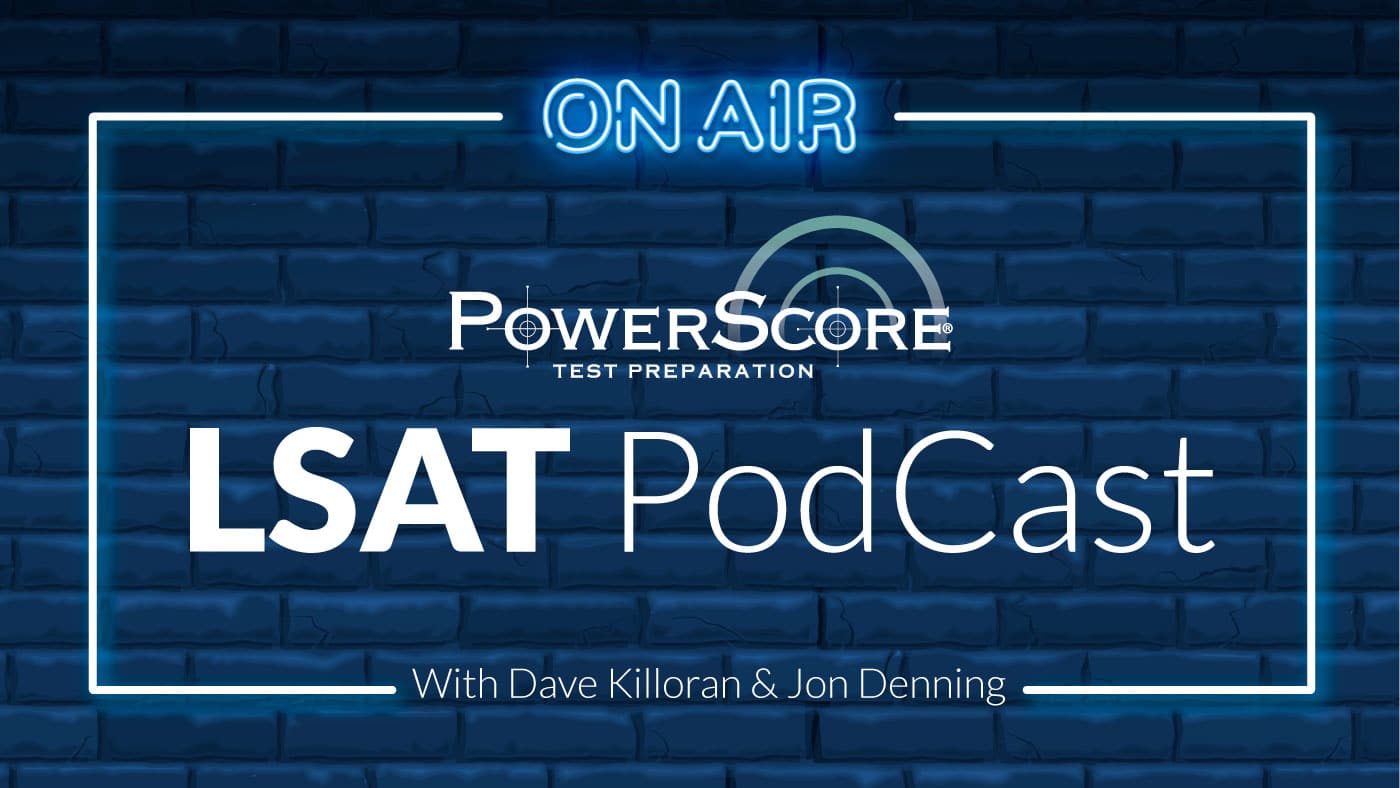Episode 12 continues the discussion from the last episode by looking at the other Assumption question type: Sufficient Assumptions (also known as Justify the Conclusion). Dave and Jon provide an extensive analysis of this unique LR task, exploring everything from how to spot Justify questions to the relationship between Assumption and Justify—key similarities and differences—to powerful mechanistic techniques like the Justify Formula to help you confidently solve even the trickiest examples!
You can find the episode below, but make sure to subscribe/follow and rate/review on Apple Podcasts, Spotify, YouTube, or Stitcher!
Timestamps
0:00 – Intro.
4:28 – This Week In The LSAT World/March 2019 Test Score Release.
9:59 – Intro to Sufficient Assumption/Justify the Conclusion Questions.
11:43 – Necessary Assumptions vs. Sufficient Assumptions.
31:11 – Justify Formula.
40:03 – Supporter/Defender in Justify.
48:23 – Mechanistic Approach.
1:06:41 – Outro.


Rain says
Good early morning, Thank you and of course the PodCast always entertaining and informative, both of you gentleman were in rare form. Question: I always have that problem with the Justify principal where: The quanifiers(hope spelling it right) most, all and some are insiduously interspersed in a lot in these LR questions (and in fact I get thrown off) like in the stimulus starts with ‘most’ then the succinct answer choices end with and may have similiar aspects and phrasing such as; some grey cats or, all grey cats ….,etc. for the unsuspected test taker to choose from; Indeed, unless,its stated in the stimulus its invalid, incorrect, right? It’s an enigma to me as such, therefore, how do I use the mechanistic approach or the proper approach respectfully requesting, to deconstruct this effectively Mr. Jon and Mr. Dave? Also, I will practice more to get the feeling of being comfortable but, right now I need to know where did I go wrong or not?Thank you no rush for the answer.( Mr. Jon thank you for the good taste in music Mr. Herbie Hancock).
Jon Denning says
Hey Rain – thanks as always for listening!
I’m not sure I *totally* understand your question(s), but I’ll give this a shot nonetheless. And I’ll do so in two parts so that I’m more likely to address your question (even if I’m not perfectly clear on it) 🙂
First, if you’re talking about understanding proper Formal Logic, where you have relationships between some/most/all/none type statements, then that’s a whole separate issue/discipline than Justify alone, and likely warrants some direct investigation. Being able to properly connect those pieces, make inferences, and find errors isn’t a terribly common scenario on the LSAT, but since you bring it up (and it gives you trouble) spend some time working on it. For reference, we have several Formal Logic instruction modules and documents in our Online Student Center for currently-enrolled course students that will be a huge help!
Second, if your worries are more directly related to Justify and you’re wondering what it takes–and what fails–to prove statements with words like some, most, and all, then the key thing to remember is you can only work from more absolute or specific to less, never in reverse!
That is, if you’re trying to prove an idea like “most As are Bs,” you could do it with a synonymous statement like “the majority of As are Bs,” or “fewer than half of As are not Bs,” or you could say something even stronger like “All As are Bs,” or “Every A is a B,” etc. What you can’t do is try to get to “most” from a weaker idea, like “some”: “Some As are Bs,” or “Some Bs are As” won’t do it.
So as a Justify answer choice looking to prove a stimulus conclusion with “most” in it, you know you need another most or stronger for it to have a chance.
Ditto some and all:
Some can be proven by anything except “none” (so by another some/at least one, by most/majority, or by all/every).
All requires an equally strong piece of supporting evidence, with all, every, each, 100%, or similar. Nothing less will do.
From a mechanistic standpoint then you know if there’s a rogue element with a word like that, especially in the conclusion, you’re looking for that same degree of strength or greater as the proving answer choice.
I hope that helps! Either way, keep jamming to Herbie Hancock 🙂